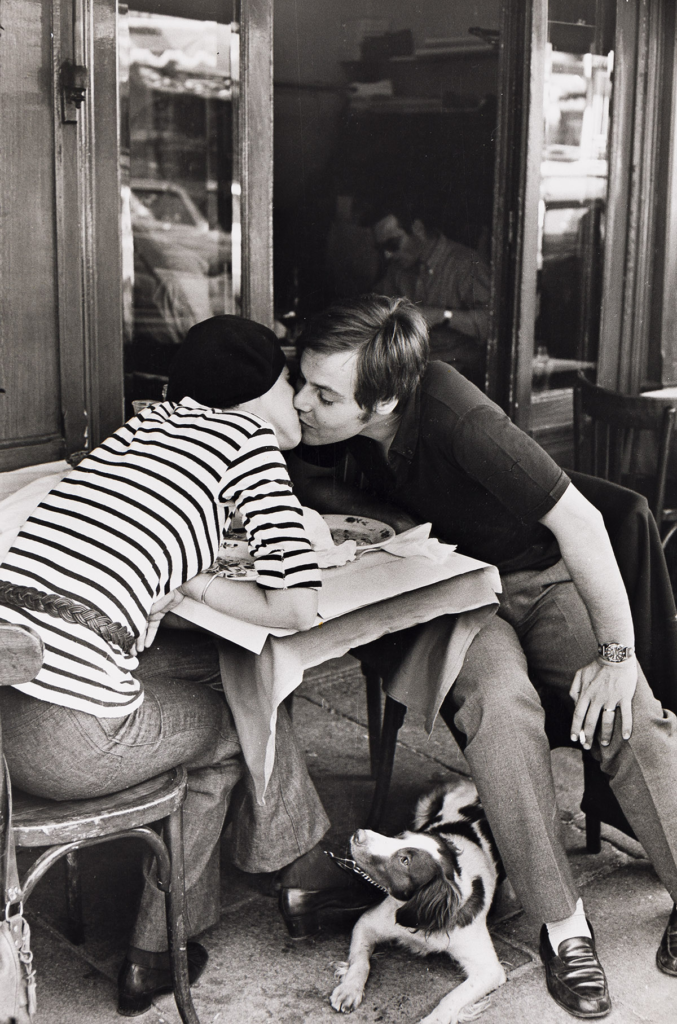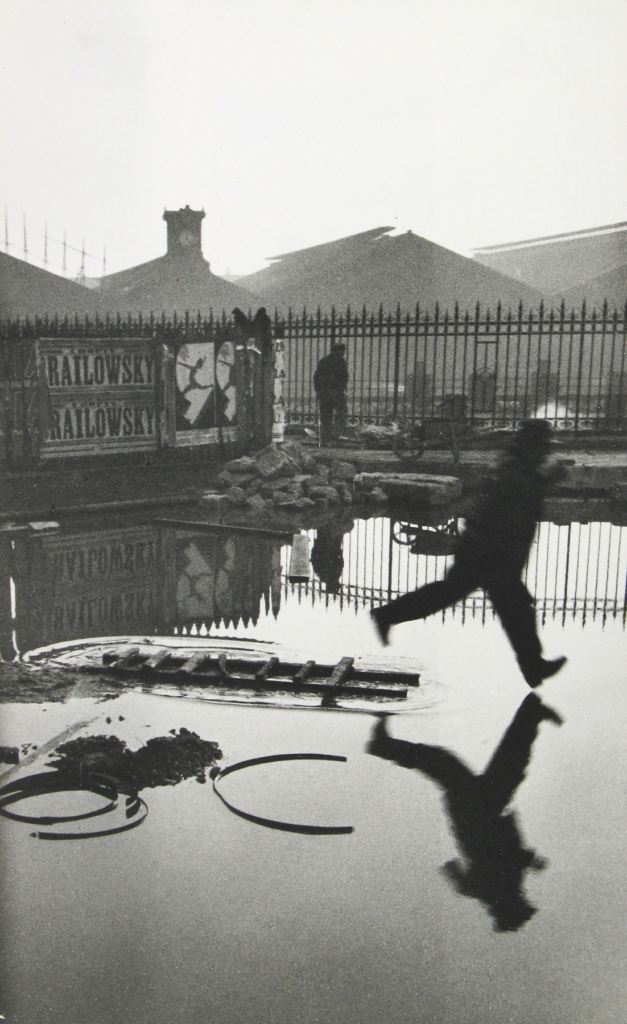
Henri Cartier-Bresson was a French artist and humanist photographer considered a master of candid photography, and an early user of 35mm film. He pioneered the genre of street photography, and viewed photography as capturing a decisive moment. In the 1970s he largely discontinued his photographic work, instead opting to paint.




The Decisive Moment
The ‘Decisive Moment’ refers to the timing, the composition, the totality of a picture, an ordinary moment transcribed as a complete statement; the moment the shutter is pressed.

Analysis
Form – The image has what seems to be a person running across a wet street, jumping over a puddle, with buildings and a man visible in the background (all in detail, suggesting a smaller aperture was used). There is clear use of the decisive moment here, as Henri Cartier-Bresson has chosen to take the picture right as the person running is about to exit the frame, perfectly capturing the decisive moment in photographic form. There is also a clear contrast in tones, as the person shown running across the image is completely black whereas the rest of the image has a variety of tones ranging from complete whites in the sky to greys throughout other aspects of the image, amplified by the lack of colour which draws out more attention to detail and the tonal range (linking to the depth which the image holds).
Composition – The photo has been taken at the perfect moment to capture the person right before they exit the frame, again linking to essence of movement as it is clear the person is going somewhere. Other aspects of the image are also all positioned more towards the top of the image rather than the centre, as the centre and bottom are mostly all just water showing reflections of the rest of the image which creates repetition and helps add form and shape to the image – furthermore, the rule of thirds horizontally perfectly splits the image into fore, mid, and background from bottom to top, enhanced by how the subject is positioned him on the right third (adding visual appeal) as well as showing clear movement with him being out of focus (in contrast to the stationary man in the background).
Conceptual, contextual; capturing the moment – The image perfectly depicts the concept of the decisive moment, as if the image was taken even a second too early or too late the person could’ve not been in frame at all, but the exact moment Cartier-Bresson chose to take the photo allows for essence of movement to be shown clearly as well as creating an effective composition, turning an ordinary scene into an extraordinary, interesting and everlasting image. This can be credited to Cartier-Bresson’s choice of camera, the Leica rangefinder, since it’s portable, quick and discreet nature helps capture more candid and natural photos which may not have been possible with other cameras which may have required lots of tweaking/set-up, risking missing the decisive moment.
Why is a camera an extension of the eye?
The camera can freeze and capture a scene whereas the eye cannot. It can create a physical manifestation of a scene which otherwise would have been forgotten with all the things the average person sees on the daily (linking to street photography, creating intriguing and extraordinary images out of everyday ordinary scenes).
What is the physical pleasure in making photographs?
It immortalises memories which can then be looked back upon, creating emotional connections and pictures which hold significance rather than just being pieces of paper.
How can be photography be likened to hunting?
It can be likened in the sense that photographers wait patiently and search for the perfect shot, they ‘hunt’ for their desired scene.
